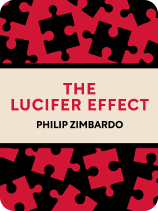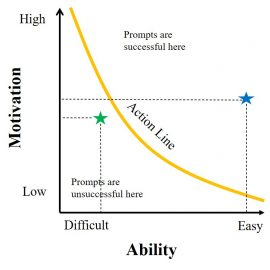

This article is an excerpt from the Shortform book guide to "The Lucifer Effect" by Philip Zimbardo. Shortform has the world's best summaries and analyses of books you should be reading.
Like this article? Sign up for a free trial here .
What are identity cues? How does the Stanford Prison Experiment show how identity cues can change your morals?
Psychologist Philip Zimbardo says it’s normal to adapt our identity to our environment. However, he says that certain identity cues can influence us to do things that aren’t rational or morally good.
Read more about identity cues, as explained in The Lucifer Effect.
What Are Identity Cues?
One type of situational variable that can cause a drastic shift in morals is the identity cue. Zimbardo explains that identity cues are aspects of the environment that we draw on when shaping our self-image and determining how to act. These can include specific locations, clothing and other props, and the expectations of others.
To a certain degree, it’s normal to adapt our identity to specific circumstances. Zimbardo states that we all take on roles, or temporary identities, in various areas of life. For example, at work, we take on the role of “employee,” and act a certain way that we wouldn’t at home. However, in extreme cases, if we’re ensnared in enough environmental cues placing us in a given role, these roles can take hold of our emotions and influence us to do things we never would have rationally agreed to do.
Accept That No Single Role Defines You
Zimbardo asserts that our identities are largely dependent on our immediate circumstances. In The Subtle Art of Not Giving a F*ck, Mark Manson uses this assumption as the basis of a further argument: Many of us fail to realize how variable our identities are, instead of clinging to the notion that we are a specific kind of person and suffering a fearful identity crisis when that belief is challenged.
Clinging to the idea of our fixed identity makes us suffer because it discourages us from positively changing. The wrong role can corrupt our moral compass, and we can easily get stuck in these roles because we’re scared of changing who we are. For example, if a violent gang member is scared of losing their identity as a successful gangster, they may resist leaving a life of crime.
Manson claims that letting go of your identity is a key step in personal growth. He advises choosing a simple identity for yourself and holding it loosely: Accept that none of the roles you play define you as an individual—it’s always possible to change roles and become someone totally new. To continue our example, instead of merging with the role of “tough gangster,” our gang member could simply label himself “tough” and build self-esteem by persevering through a challenging job search.
Identity Cues Example: The Stanford Prison Experiment
Zimbardo states that by forcing the students into the simulated roles of “prisoner” and “guard” during the Stanford Prison Experiment and surrounding them with identity cues that reinforced this power dynamic, he created the circumstances necessary to disengage the guards’ sense of morality. After they had donned identical uniforms and spent enough time in the lifelike prison environment, the role of “guard” overwhelmed the volunteers’ typical personalities.
While they were initially merely pretending to be fearsome and domineering, within days the guards internalized this role, gaining genuine feelings of disgust toward the prisoners and escalating their cruelty far beyond what Zimbardo asked of them. The guards were the most sadistic toward the prisoners when they felt they were not being watched—they would insult and punish the prisoners more on the night shift than during the day and shove prisoners into the urinals during the presumably unobserved toilet runs. This is the opposite of what we would expect if they were just playacting for the cameras.
This situation’s identity cues transformed the prisoners’ personalities, too. After a couple of days of arbitrary punishment for senseless rules, the college-age volunteers became mindlessly obedient to the guards. Their personalities from the outside world disappeared. Rationally, they knew they were volunteers who could quit at any time, but they embraced their roles as reality so deeply that none of them really tried—they accepted their fate as helpless prisoners.
Evidence Against the Power of Roles in the Stanford Prison Experiment
Zimbardo asserts that the Stanford Prison Experiment proves the power of situational identity cues to overpower your everyday personality. Recent interviews with the experiment’s participants and recently uncovered records of the experiment call this conclusion into question.
Zimbardo argues that the guards’ cruelty escalated as they slipped more into their roles, losing touch with their existing personal identities. However, in an interview, the guards’ brutal leader Dave Eshleman (renamed as “Hellmann” for privacy’s sake in The Lucifer Effect) states that he remained detached from the guard identity during the experiment. Eshleman claims he saw the work as a mere theatrical exercise, drawing from his experience studying acting. Judging from the rest of his interview, Eshleman identified more as Zimbardo’s partner in experimentation than as a real prison guard. Therefore, we can perhaps blame his cruelties more on Zimbardo’s coaching and direction than the corrupting influence of the “guard” role.
The prisoners’ roles may not have overtaken their personalities as much as Zimbardo claims, either. Zimbardo argues that the prisoners obeyed the guards even though they knew they could have left at any time because they identified so deeply with the “prisoner” role. However, a recently uncovered recording from the experiment shows Zimbardo admitting that he told the prisoners they really couldn’t leave—meaning that their obedient behavior was indicative of true helplessness, not role identification. In a later interview, Zimbardo claims he gave the prisoners a “safe phrase”: If they said the exact words, “I quit the experiment,” he would release them. However, the consent forms the prisoners signed before participating didn’t refer to this safe phrase.

———End of Preview———
Like what you just read? Read the rest of the world's best book summary and analysis of Philip Zimbardo's "The Lucifer Effect" at Shortform .
Here's what you'll find in our full The Lucifer Effect summary :
- How ordinary people can turn into heartless killers
- Insights and criticisms of the Stanford Prison Experiment
- Tips on how to resist circumstantial influences






